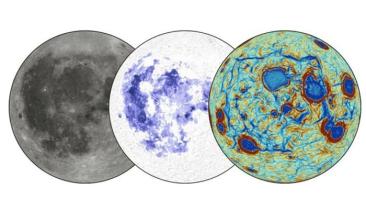The discovery of Pluto
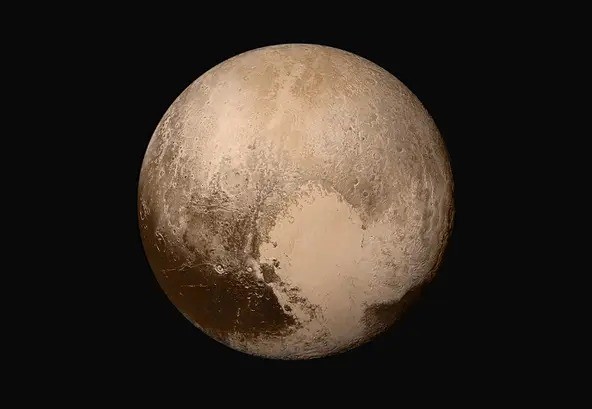
The discovery of Pluto, occurred on February 18, 1930 by Clyde Tombaugh. It was initially classified as the ninth planet of the solar system. For a long time have been hypothesized the existence of a ninth planet responsible for some alleged disturbances in the orbit of Uranus and Neptune and the American billionaire Lowell, passionate about astronomy and known for his studies on Mars, dedicated 14 years of his life to the search of this ninth planet but he couldn't locate it.
After him the research continued and in 1930 at the Flagstaff observatory in Arizona, founded by Lowell himself, a young assistant Clyde William Toumbaugh, comparing photographic plates taken a few days apart, was finally able to announce the discovery of the mythical ninth planet which he called Pluto, in honor of the God of the underworld but above all to commemorate with his initials PL Percival Lowell. The planet was located just a short distance from where Lowell had hypothesized and by analyzing photographs taken years earlier it was discovered that Pluto had already been photographed twice in the same observatory when Lowell was still alive.
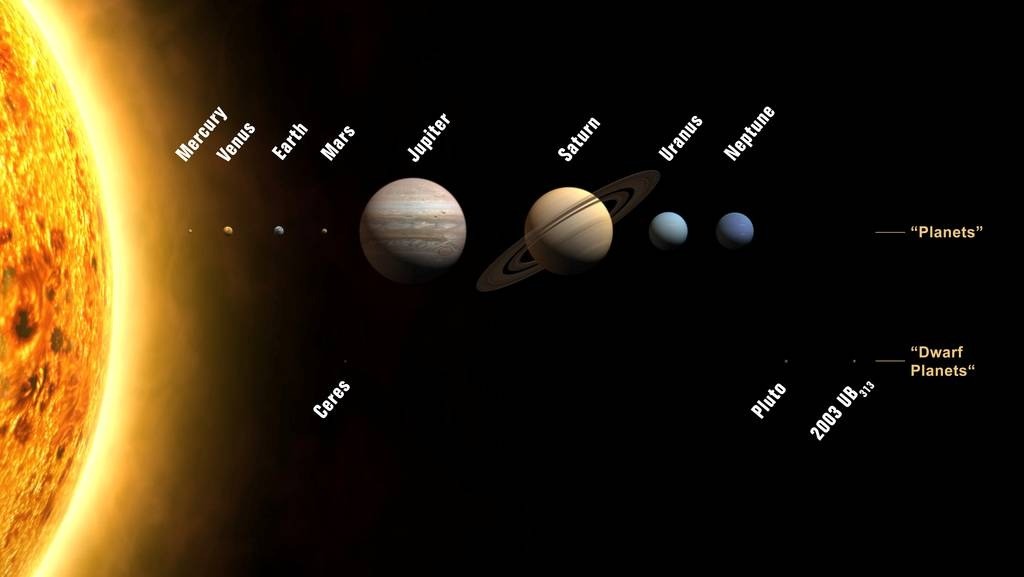
In reality, years later, in 1989, thanks to Voyager 2, it was discovered that the alleged perturbations in the orbit of Uranus and Neptune that had given the impetus for the search for this ninth planet were only due to calculation errors. So the discovery of Pluto was accidental based on an error, providential it seems. A peculiarity of Pluto is its very elliptical orbit, so much so that it is sometimes closer to the Sun than Neptune.
No probe has yet gone to Pluto so there isn't much information about it. In 1988 the planet occulted a star and at that moment it was confirmed that it has a weak atmosphere made up mainly of frozen methane, nitrogen and carbon monoxide.
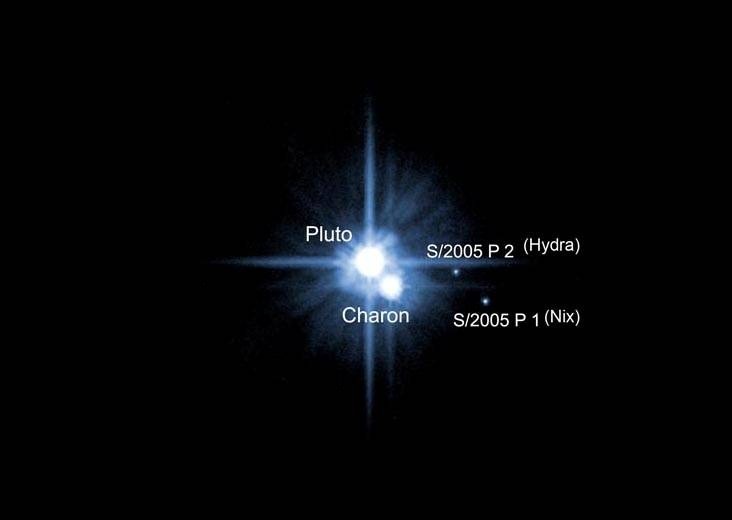
The Pluto's temperature is very low, around -230°, due to the considerable distance from the Sun. A rather crude mapping was carried out thanks to the photos taken by the Hubble telescope and show lighter spots compared to a darker surface.
Pluto has five satellites, the largest of which, Charon, discovered only in 1978, has considerable dimensions, about half the size of Pluto, so much so that it is often spoken of as a double planetary system. Another peculiarity of this pair is the notable inclination of their orbit on the ecliptic plane and the spin-orbit coupling, in practice the revolution period of Charon around Pluto, of about 6 days, is equivalent to the rotation period of Pluto. The satellite therefore always shows the planet the same face (as the Moon does with the Earth) but Pluto also always shows its satellite the same hemisphere. This is the only case in our solar system of double synchrony. All these peculiarities of this strange couple make them very interesting for the study of the origins of our solar system and lead us to think that they were formed in the Edgeworth-Kuiper belt, an area at the edge of our solar system where there are many icy bodies of small in size and with physical and orbital characteristics halfway between a small planet, an asteroid and a cometary nucleus.
Regarding the exploration of Pluto, at the beginning of 2000, the Pluto Express Mission probe was supposed to leave Earth in 2004 directed to Jupiter. There, it would have received a gravitational push allowing it to reach Pluto and Charon in 2012 traveling at around 18 km/s. However, the mission was canceled due to budget cuts and replaced by the new New Horizons mission to study Pluto and the Kuiper belt. The probe which left on 19 January 2006 arrived at Pluto in July 2015 after about 10 years of travel, but will limit itself to flying over it as the probe does not have enough fuel to slow down and enter the orbit.
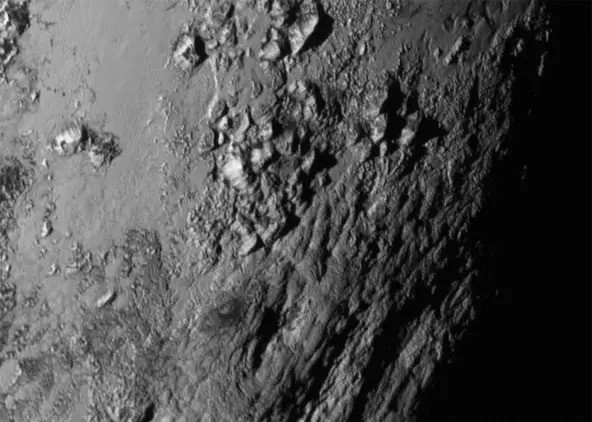
However, the funny thing about the infamous ninth planet of our solar system is that due to its particularities and its small size (it is smaller than our Moon), Pluto is now classified as a dwarf planet.
This decision was the cause of much discontent in the world, so much so that in 2009 a law in the state of Illinois, home of Tambough, the discoverer of the planet, reclassified Pluto as a planet... poor Pluto!
One last curiosity Pluto, Mickey's legendary dog, was so called because he appeared in comics for the first time shortly after the discovery of Pluto... not to mention all the science fiction films and novels that feature him as the protagonist... It may be a small planet but it doesn't seem to go unnoticed at all :-)













